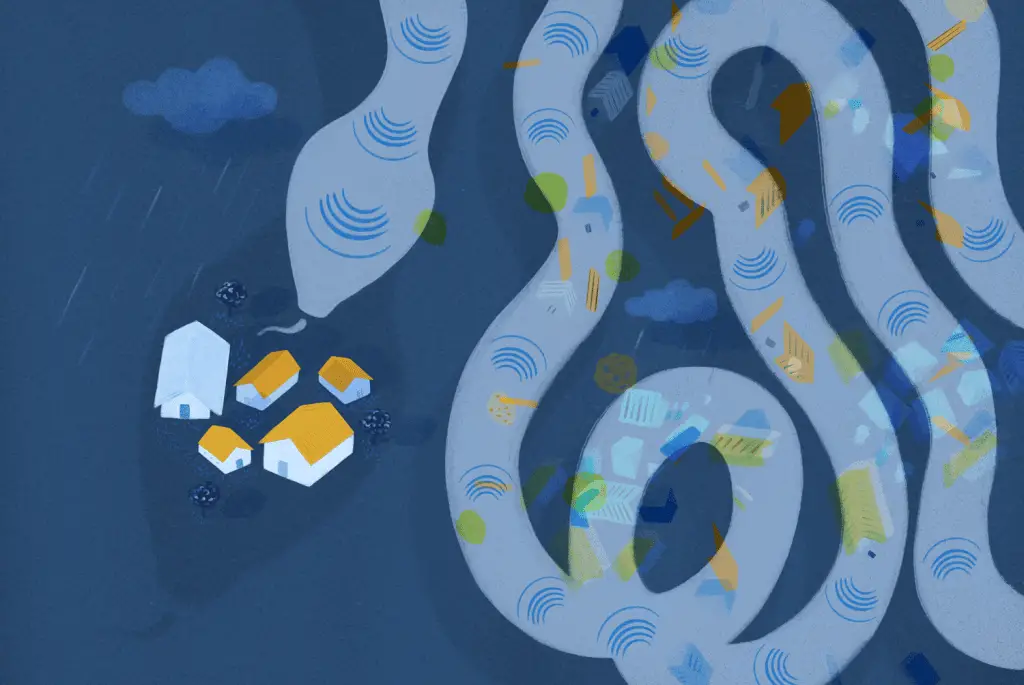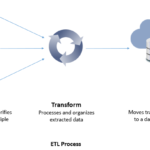
Introduction
AI and Disaster Response and Risk Management should be every countries top priority, disasters can take many different forms. From natural disasters like hurricanes and wildfires to pandemics and terrorist attacks, we must be ready. The impact of a disaster can be devastating, both for the people affected and for the economy.
In disaster risk reduction (DRR), artificial intelligence (AI), particularly machine learning (ML), plays an important role, from forecasting of extreme events to developing risk mitigation strategies and providing real time situational awareness and decision support.
In order to minimize the damage caused by disasters, it is important to have a disaster risk management strategy in place. Many experts believe that artificial intelligence (AI) can play a role in improving disaster response and risk management.
This blog post will explore how AI can help during a disaster. We will also look at how experts can use AI for disaster risk reduction.
Table of contents
Also Read: AI and Power Grids.
Artificial Intelligence / Machine Learning for Disaster Response and Recovery
First, let’s look at how AI and machine learning (ML) can help when disaster strikes. Artificial intelligence uses algorithms to learn from data. Machine learning is a type of AI that allows computer systems to improve from experience without being programmed to do so.
In the context of disaster response, first responders can use AI and ML for a variety of tasks, such as:
Automated damage assessment
One of the first steps in any disaster response is damage assessment. This involves sending out teams of assessors to evaluate the extent of the damage. Automated damage assessment using AI and ML can help to speed up this process.
For example, we can use computer vision algorithms to analyze images and videos to identify damaged buildings. This information can then be used to create maps that show the affected areas. In addition, firms can use AI to process large amounts of data from different sources (e.g., social media, satellite images). This provides a complete picture of the damage caused by a disaster.
Google has one such AI, which uses datasets from the biggest recent earthquakes, including:
- Haiti (2010)
- Mexico city (2017)
- Indonesia (2018)
By using AI for damage assessment, responders can better understand the gravity of the disaster situation.
Predictive analytics for evacuation
Another way that AI can help during a disaster is by using predictive analytics to predict when and where an evacuation might be necessary. Let’s take an erupting volcano as an example.
We can use predictive analytics to analyze data from seismic sensors, weather data, and satellite images. Experts can then use this information to create a model that predicts how an eruption might unfold. Knowing if it will be violent enough to warrant an evacuation and when it might happen allows authorities to prepare for the disaster efficiently.
In addition, predictive analytics can be used to analyze data from social media. This data can help to monitor rumors about an impending disaster. Using AI-based methods to monitor social media, responders can get a head start on evacuations and other response measures.
Routing of emergency resources
During a disaster, time is of the essence. We can speed up many of the tasks that need to be carried out during a disaster response. This can help to save lives and minimize damage. Transfer learning can create models that can analyze satellite images and identify areas of damage. Relevant authorities can then use this information to deploy emergency services more efficiently.
Intelligent search algorithms are used to find the best route for evacuations. By using AI to route emergency resources, we can ensure that they are deployed more efficiently and effectively. In addition, we can use AI-based solutions to predict the path of a natural disaster.
A Geographic Information Systems (GIS) can also be used for routing purposes. For example, the open-source software, QGIS, can be used to create maps that show the locations of evacuation centers and first responders.
Prevention
Disaster risk management is not just about response and recovery. It is also about prevention. Artificial intelligence can identify risk factors that may lead to a disaster. For example, it can use machine learning to analyze historical data to identify patterns that may indicate a forthcoming catastrophe.
The collection methods for this data have become increasingly sophisticated. For example, the use of drones and sensors can help to gather data more efficiently. This data can then be processed using AI to provide insights that can help prevent heavy damage from natural disasters.
In that case, cities can put disaster preparedness programs like early warning systems in place to minimize the impact of the disaster.
Real-Time Data and the Internet of Things
Another way AI can help improve disaster response is by providing real-time data. In short, the Internet of Things (IoT) refers to the network of physical devices, vehicles, and home appliances that are connected to the internet. These devices are equipped with sensors that collect data about their surroundings. This data is then processed and analyzed using AI to provide insights in real-time.
In many cases, first responders have to rely on information that is hours or even days old. This can make it difficult to make informed decisions about where to deploy resources.
The Internet of Things can collect real-time data that we can use to improve disaster response. For example, government leaders can place sensors in high-risk areas to monitor conditions and provide early warning of approaching danger.
You can also find networks for flood monitoring systems that share real-time data to help predict and prepare for floods. For an effective response, it is essential to have up-to-date information about the disaster.
Robotics and Disaster Response and Risk Management
Robotics has emerged as a significant player in disaster response and risk management, augmenting the capabilities of rescue and recovery teams and significantly improving the efficiency and effectiveness of operations. Drones and unmanned ground vehicles, equipped with advanced sensors and communication tools, can navigate disaster-stricken areas where it’s unsafe or inaccessible for human responders. They can gather critical information, including real-time imagery and sensor readings, to provide a comprehensive overview of the disaster scenario, thereby aiding strategic planning and operations.
During an ongoing disaster, robotic systems can serve multiple crucial roles. Search and rescue robots, equipped with thermal sensors and high-resolution cameras, can locate and reach survivors in perilous or hard-to-reach locations, such as beneath rubble following an earthquake. These robotic systems can either relay this information back to human teams or, in some cases, directly assist in rescuing those trapped. Autonomous drones can deliver supplies and medical aid to regions where immediate human response might be challenging due to physical constraints or ongoing danger.
In the aftermath of a disaster, robots can play a pivotal role in recovery operations. Robotic systems can assist in clearing debris, repairing damaged infrastructure, and performing other heavy-duty tasks that might otherwise pose risks to human workers. These robots can operate in hazardous conditions, such as radioactive or biohazardous environments, that humans cannot safely enter. Their ability to function autonomously or via remote control reduces the risk to human life during these crucial recovery operations.
Robotics offers substantial potential in improving disaster response and risk management. By enabling fast, accurate data collection and facilitating physical operations in challenging environments, robots can enhance both the speed and safety of disaster response efforts. As advancements in robotic technologies continue, we can anticipate an even greater role for robotics in disaster scenarios, extending their capabilities and making our disaster response and recovery operations more efficient and effective.
Engaging the Whole Community
The best way to improve disaster response is to engage the whole community. That includes government agencies, businesses, nonprofits, and individuals. Each of these groups has something to contribute to the disaster response effort. AI-based methods can more easily engage the whole community in the disaster response effort.
For example, businesses can use AI to monitor social media for early warnings of approaching disasters. Emergency management systems can use AI to identify people who need assistance and accordingly deploy resources from the city infrastructure.
The coordinating city departments during a disaster can also use AI to predict traffic patterns and plan the best route for evacuation. In disasters like Hurricane Sandy, people were stranded for days because of the gridlock. By using AI to predict traffic patterns, we can avoid this type of gridlock in the future.
Alternatively, if evacuation is not possible, AI can be used to identify safe areas for shelter.
Staying a Step Ahead of Disasters
AI-based disaster response and risk management methods can help us stay a step ahead of disasters. By using AI to predict the path of a disaster, we can evacuate people in its path and deploy resources ahead of time.
If we know that a hurricane will hit a certain area, we can use deep learning techniques and reinforcement learning to predict the storm’s most likely path. Behavior learning works best in this case as it can learn from past data to predict future behavior.
Depending on the collection methods, biases in training data can distort results. Since machine learning is mainly used for analyzing large data sets, sometimes these biases in training aren’t caught in time. In the case of rare disasters like hurricanes, the training data set is usually not large enough to accurately predict the path of the storm.
Finally, AI can improve humanitarian mapping efforts using machine learning to map the affected area automatically. This is especially useful in the case of large-scale disasters like earthquakes, where a lot of data needs to be processed quickly. First responders can use these humanitarian mapping efforts to plan the best way to deploy resources.
Also Read: Books: Artificial Intelligence and Smart Cities.
Public/Private Partnerships Are Vital for Adequate Disaster Response
It’s also worth noting that public/private partnerships are vital for adequate disaster response. The government can’t do it all, and private companies often have the resources and expertise to fill in the gaps.
Many tech companies have begun offering training materials and services to help government agencies improve their disaster response efforts. There are ethical considerations to be taken into account when private companies are involved in disaster response, but overall these partnerships can be a force for good.
A wide range of development efforts is underway to create AI emergency management systems. We want to understand these tragedies’ effects on the city departments before a disaster even happens. Behavior learning is a prime example of how AI can be used in this way.
We can use AI to build models of city infrastructure and simulate various disasters to see how the city would respond. These simulations can help us identify weaknesses in the city infrastructure and make changes before a disaster strikes.
Public partnerships like these can help create a more prepared community for future disasters. By working together, we can ensure that the right resources are in place to respond effectively to any disaster.
Conclusion: AI and Disaster Response and Risk Management
Disaster risk management is a complex and multi-faceted problem. AI and machine learning can help improve disaster response in several ways. From automated damage assessment to predictive analytics for evacuation, AI can make a significant difference when it comes to minimizing the impact of a disaster.
Artificial Intelligence (AI) has demonstrated immense potential in improving disaster response and risk management, transforming the way we prepare for, respond to, and recover from disasters. Leveraging machine learning algorithms, AI can analyze vast amounts of data from various sources such as weather forecasts, geographical information, and historical disaster data. This capability can lead to accurate predictions about potential disasters, allowing for more efficient allocation of resources and proactive measures to mitigate the impact of disasters.
AI can also play a significant role during disaster events. AI-powered drone technology can be deployed to gather real-time data from disaster-stricken areas, aiding in the swift identification of affected regions and people in need of immediate assistance. This information can significantly speed up the response time, allowing rescue teams to work effectively and save more lives. AI technologies such as Natural Language Processing (NLP) can analyze social media posts and text messages to identify emergent patterns and pinpoint areas where help is urgently required.
In the aftermath of a disaster, AI can support in recovery and rebuilding efforts. AI algorithms can assess the extent of the damage and provide insights into where rebuilding efforts should be prioritized. Machine learning models can be trained to forecast future disasters, supporting the design of more resilient infrastructures and aiding in developing more robust disaster risk management strategies.
AI holds transformative potential for disaster response and risk management, from enabling predictive modeling for better preparation to providing real-time insights during a disaster and facilitating efficient recovery efforts. As our technological capabilities continue to evolve, it’s clear that AI will become an increasingly vital tool in our arsenal for managing and mitigating the effects of disasters. It signifies the intersection of advanced technology with humanitarian efforts, embodying how technology can be leveraged for the betterment of society.
References
Huang, Chongfu, and Cengiz Kahraman. Intelligent Systems and Decision Making for Risk Analysis and Crisis Response: Proceedings of the 4th International Conference on Risk Analysis and Crisis Response, Istanbul, Turkey, 27-29 August 2013. CRC Press, 2013.
Kumar, T. V. Vijay, and Keshav Sud. AI and Robotics in Disaster Studies. Springer Nature, 2020.
Mercantini, Jean-Marc, and Colette Faucher. Risk and Cognition. Springer, 2015.
Mohammed, Ali. Future Role of Sustainable Innovative Technologies in Crisis Management. IGI Global, 2022.
Paton, Douglas, and David Moore Johnston. Disaster Resilience: An Integrated Approach. Charles C. Thomas Publisher, 2006.











